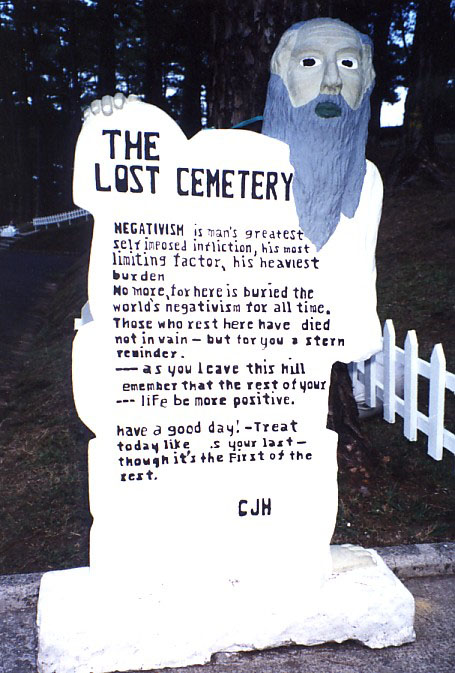Camp John Hay; Cemetery of Negativity
Baguio City
Share this page:
Camp John Hay covers an area of 690 acres and was built as a "rest and recreation" area for US army personnel and U.S. Department of Defense personnel stationed in the Philippine Islands.
It was in Camp John Hay that World War II began and ended in the Philippines: it was here in December 1942 that the first Japanese bomb was dropped, and it was here that General Yamashita signed the Japanese surrender on September 3, 1945. During the period of Japanese occupation (1942-45) the camp was used as a concentration camp for American and British soldiers.
In 1991 Camp John Hay was handed over to the Philippines government. After the handover, it was run by the Bases Conversion Development Authority (BCDA) as a "Resort and Recreation Area".
It was then officially renamed Club John Hay, and for the first time in its history it was freely opened to the public along with its golf course, tennis courts, swimming pools, and restaurants (under the Americans, anyone could get entry to Camp John Hay after showing adequate identification documents).

Cemetery of Negativity
The Cemetery of Negativity
Camp John Hay has a quaint Cemetery of Negativity (also known as The Lost Cemetery) that is really worth a visit. The Cemetery of Negativity is not a normal cemetery. Built by the Americans in the early 20th century, it is a small picket-fenced enclosure with rows of inscribed headstones under which "negative habits and thoughts" (not people) are buried. A sample inscription:
A truly miserable day.
Born in gloom.
Lived without bloom.
Buried in this tomb.
Camp John Hay today
Starting in 1997 Camp John Hay (now known as Club John Hay) was closed to the public for a long period, and underwent upmarket redevelopment for a country club, hotel, restaurants, and condominiums.
The development proceeded amongst accusations of cronyism and poor business management.
Club John Hay now offers cottages and a golf course set amid a rolling green landscape that is popular with golfers (unfortunately, admission is for members only).
However, Club John Hay is still open to the public and the sections that are still open to the general public provide opportunities for bushwalking and jogging among Baguio's famous pine trees.
An Interview with a Local Baguio Resident on Club John Hay's "Upgrade"
"As of 2014, entrance to Club John Hay remains free. However, the "improved" (that is, developed) John Hay contains less greenery (less lawns and less trees). The greenery was once the top attraction of John Hay.
On the other hand, there are a lot of restaurants and other eateries (mostly built on what used to be grassy fields) and you can really chill out there if you have sufficient funds. This is fine for the richer middle class but is a backward step for less well off Filipinos.
Some of the attractions have been redeveloped (for example, the Ampitheater has been redeveloped and is now the site of a grand house, which you can rent if are rich enough).
Other attractions remain but now you have to pay to enter (for example, the Cemetery of Negativity). The road through the golf course to the mountainous recreation area beyond now charges a toll. The church is still open for events such as weddings.
The Circle Garden which previously was free to enter now charges an entrance fee of P150 per person.
New adventure rides have been built but these also charge hefty fees. For example, the Zipline, the Supersurfer and the Treedrop charge P1,500 (as of 2014).
The old playground has been moved to make way for a new development and the old grassy area where you used to be able to camp for free has now been taken over for a replacement playground.
I preferred Club John Hay as it was 15 years ago."
Share this page:
Author: David Paul Wagner
(David Paul Wagner on Google+)